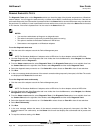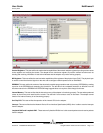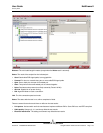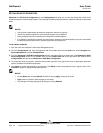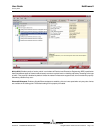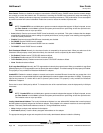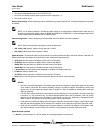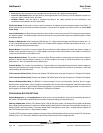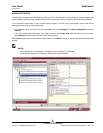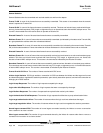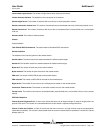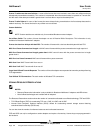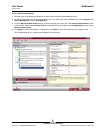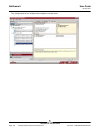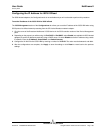
NetXtreme II User Guide
January 2010
Broadcom Corporation
Page 178 Using Broadcom Advanced Control Suite 3 Document ENGSRVT52-CDUM100-R
• Auto (default). Sets the speed to auto-negotiate with its link partner at the highest matching speed.
• Auto with 1Gb Fallback Full. Sets the speed to auto-negotiate with its link partner, but if the attached link partner is
forced at 1 Gbit/s, it will fall back to this mode.
• Hardware Default. Sets the speed to negotiate according to the setting specified by the manufacturer (see
manufacturer documentation for more information).
iSCSI Crash Dump. Crash dump is used to collect information on adapters that were booted remotely using iSCSI. To
enable crash dump, set to Enable and reboot the system. If you perform an upgrade of the device drivers, re-enable iSCSI
Crash Dump.
Interrupt Moderation. Enables interrupt moderation, which limits the rate of interrupt to the CPU during packet transmission
and packet reception. The disabled option allows one interrupt for every packet transmission and packet reception. Enable
is the default option.
Number of RSS Queues. Allows configuring RSS queues. For 1 Gbps network adapters, the RSS queue options are 1, 2,
4, and 8, with 8 RSS queues as the default option. For 10 Gbps network adapters, the RSS queue options are Auto, 1, 2, 4,
8, and 16, with Auto being the default option.
Receive Buffers. The number of receive buffers. Receive buffers are data segments that allow the network adapter to
allocate receive packets to memory. For 1 Gbps adapters, the range of valid receive buffers is 50 to 2000 in increments of
1 with 750 receive buffers as the default value.
Receive Buffers (0=Auto). The number of receive buffers. Receive buffers are data segments that allow the network
adapter to allocate receive packets to memory. For 10 Gbps adapters, the range of valid receive buffers is 0 to 3000 in
increments of 1 with 0 receive buffers as the default value.
Transmit Buffers. The number of transmit buffers. Transmit buffers are data segments that allow the network adapter to
monitor transmit packets in the system memory. The range of valid transmit buffers is 0 to 2500 in increments of 1 with 1500
transmit buffers as the default value.
TCP Connection Offload (IPv4). Enables and disables TOE offload when using the IPv4 protocol. The default is Enabled.
TCP Connection Offload (IPv6). Enables and disables TOE offload when using the IPv6 protocol. The default is Enabled.
Pause on Exhausted Host Ring. For BCM57711 network adapters, there are two possible scenarios that can trigger
pause frames to be generated: a host ring buffer is exhausted or the on-chip buffers are depleted. With RSS enabled inside
the system, it is possible to achieve better Ethernet throughput if no pause frames are being generated in a case where a
host ring buffer (of multiple RSS rings) is exhausted. The default is Disabled.
CONFIGURING SYSTEM SETTINGS
System Management on the Configurations tab allow you to view and change the values of the available properties for
the system. The potentially available properties and their respective settings are described below.
Chimney Offload State. Enables TCP Offload Engine (TOE) for the entire system. On Windows Server 2003 and Windows
Server 2008 operating systems, the options are Enable (default) and Disable. For Windows Server 2008 R2, the options are
Enable, Disable, and Auto (default). If Chimney Offload State is configured for Auto, then a 10 Gbps network adapter will
have TOE enabled, but not for a 1 Gbps network adapter.
To enable TOE for individual network adapters, configure Chimney Offload State to Enable and also enable TCP Connection
Offload (IPv4) or TCP Connection Offload (IPv6) from the Advanced area of the Configuration tab.



